Dining out in Wellington during the era of shrimp cocktails and deep-fried camembert
Today Wellingtonians are spoilt for choice when it comes to dining out in the city with a huge range of different cuisines to try. But what was the restaurant scene like over 40 years ago?
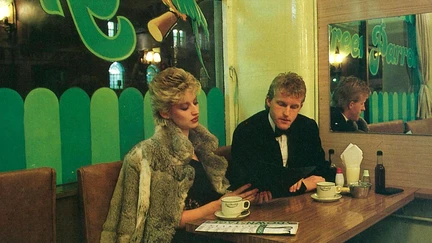
A booklet now digitised on our heritage platform Wellington City Recollect gives you some idea as to what going out for dinner in Wellington was like in the early-mid 1980s. Called The Menu Guide, it was published in late 1982 by Henry Newrick and his firm Newrick Associates Ltd. Its cover price of $4.95 was relatively high for the time (over $20 today) but the booklet also included a set of discount coupons for diners to use at a selection of restaurants, one of the first times that a hospitality discount coupon scheme had been used in Wellington.
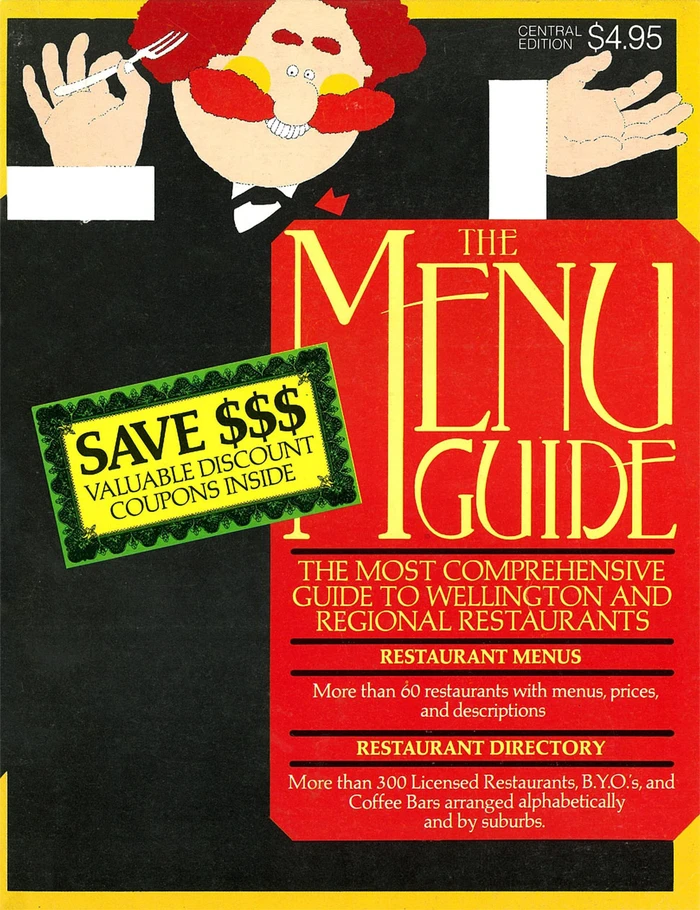
A full and complete listing of almost every restaurant operating at the time was included in the introduction but establishments could pay to have a larger advertisement placed in the main body of the booklet in the form of a menu and it is these which offer a fascinating insight into our dining-out past. This was at a time when traditional ‘family’ and ‘fine dining’ establishments started to be joined by new ‘ethnic’ restaurants as Wellingtonians’ culinary tastes expanded. Most of the fine dining restaurants were of course, French, while family restaurants all shared the common dominant theme of steak and chips.
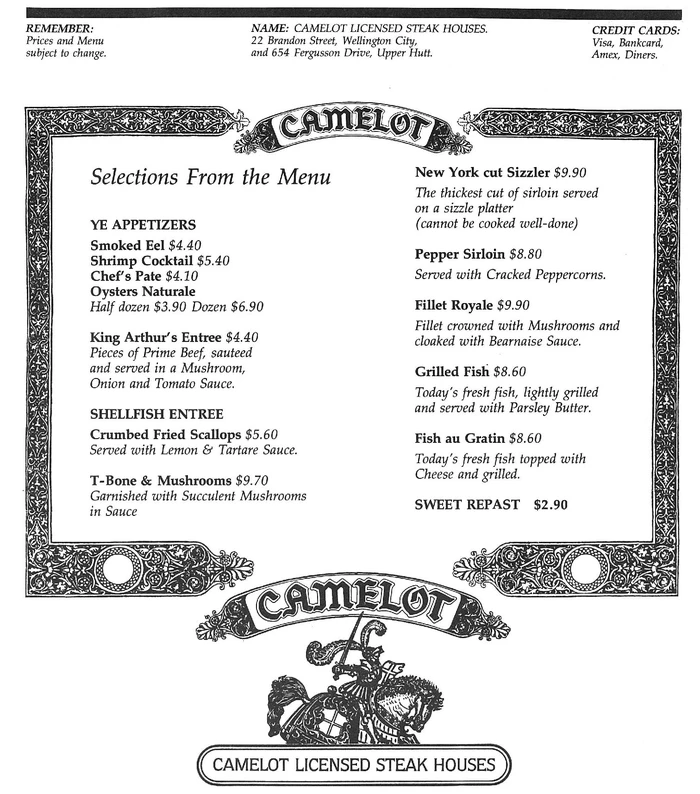
Camelot, a popular family restaurant in the Wellington CBD
Although the prices listed appear ridiculously low by today’s standards, how do they compare when inflation adjusted? The menu for Camelot which ran with a ‘Ye Olde King Arthur’ theme, indicates that average prices were probably a bit higher than today; their $9.70 T-bone steak served with a mushroom sauce would be hitting $34 in 2020.Meanwhile, Des Britten’s legendary The Coachman offered grilled prawns at the eye-watering equivalent of $63. The Bacchus restaurant seemed to take the approach that if you needed to know their prices, you probably couldn’t afford to eat there (suffice to say that deep pockets were needed).

Bacchus menu
Heralded as having one of the most 'flamboyant' menus in New Zealand, Bacchus is also said to have had some of the highest prices
Though new ethnic cuisine restaurants were starting to appear, choice was still limited. Chinese restaurants serving a ‘Kiwi-fied’ version of Cantonese food from Hong Kong and the Guangzhou province had been part of the city’s dining scene for generations, but these were now joined by Greek and Indian restaurants reflecting the long-standing presence of these ethnic communities in Wellington. South-east Asian eateries were virtually non-existent (the long-standing Indonesian restaurant Toko Baru being one of the few exceptions), middle-eastern restaurants were yet to be seen and it would be another decade before the doner kebab made its first appearance.
However, one new ethnic restaurant is included which really shook up the local scene; The Mexican Cantina in Edward Street. This gave many Wellingtonians their first taste of guacamole and nachos at a time when it wasn’t yet possible to buy corn chips or taco shells at the supermarket. The ‘Mex’ took the approach of keeping their prices low, the food simple (though exotic to most taste-buds) and packing customers in. Popular with students, waiting crowds would often be spilling out the door while chugging on their B.Y.O supplies (alcohol licences were difficult and expensive to obtain for most restaurants). With no reservation system in place, groups would have to write their details on a blackboard and wait until their listing got to the top at which point their name would be yelled out over the noise of diners indicating their table was ready.
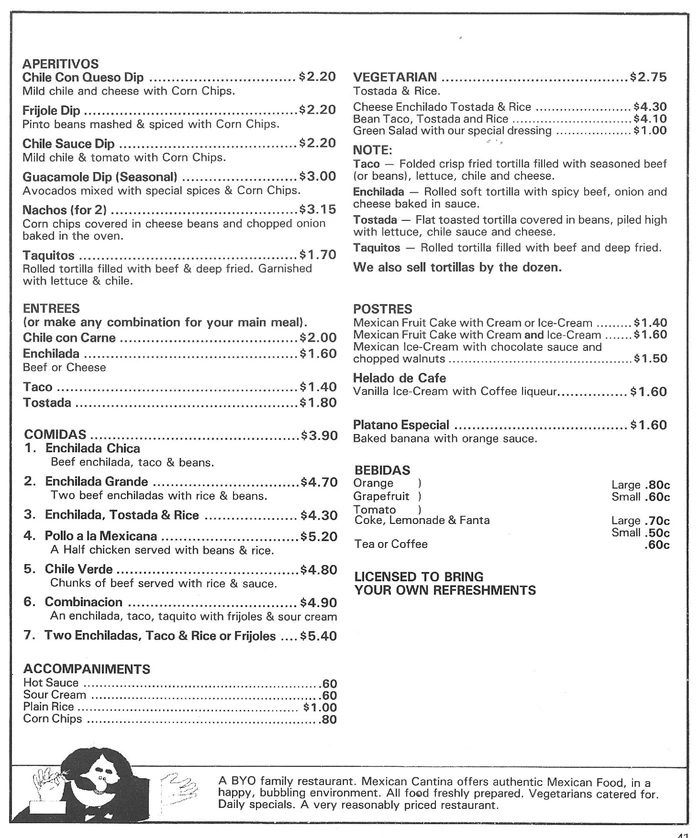
One of the most popular of the 'new wave' of ethnic restaurants in the 1980s was The Mexican Cantina
Possibly influenced by the success of the ‘Mex’, Manuel’s which operated out of the Broderick Inn in Johnsonville also adopted a Mexican theme but amusingly kept their menu as ‘family’ orientated as possible with not a pinch of cumin, dollop of sour cream or a red kidney bean to be seen…
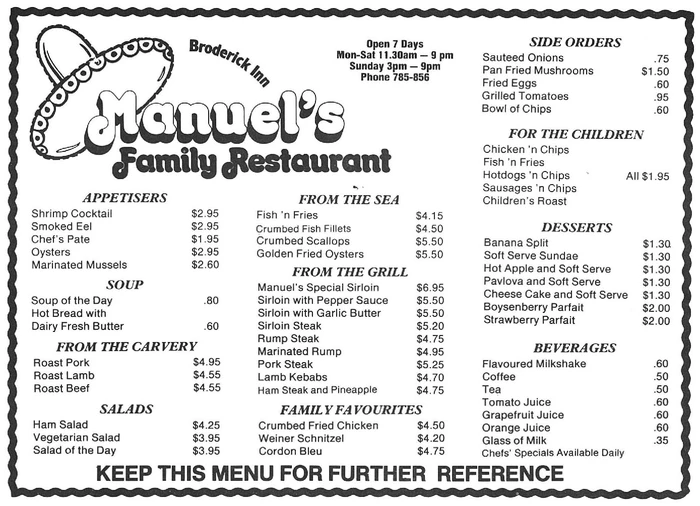
Top 'hero' image of the 'Green Parrot' by Grant Sheehan appeared in Wellington City Magazine, August 1985. Used with the permission of the publisher, Henry Newrick.